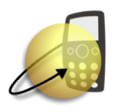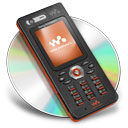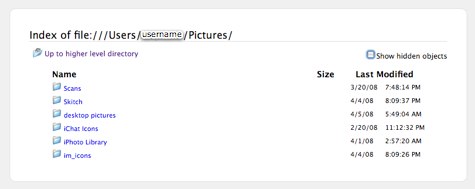So I have only played with the iPhone 3G S for few hours, but one of the cool features I was looking forward to trying was the new Voice Control. Only one problem. I had trouble figuring out exactly how to make it work. In most cases I am usually able to figure out how new iPhone features work. For this feature, I had to get some help from Apple’s support site and the iPhone 3G S User Guide. To save you some time, here is how to get this feature up and running on your new iPhone 3G S along with the command you can use to make it go. If you want to consult the manual yourself, here is the link (PDF) from Apple’s support site.
To activate the Voice Control feature:
Press and hold the Home button on your iPhone or press and hold the center button on the iPhone headset. After a second or two the Voice Control interface should appear and you’ll hear a beep indicating it is ready for your command.
Voice commands you can use:
- Call a contact: Say “call” or “dial” plus the name of a person in your contacts to call that person. If they have multiple numbers the iPhone will prompt you for which number, i.e. “Home” or “mobile”.
- Dial a number: Say “call” or “dial” and then the number
- If you make a mistake: You can say “wrong,” “not that one,” “not that,” “no,” or “nope.”
- Play music: Say “play” or “play music.”
- Pause music: Say “pause”
or “pause music.”
- Change songs: Say “next song” or
“previous song.”
- Play an album, artist, or playlist: Say “play,” then say “album,” “artist,” or “playlist” and the name.
- To enable shuffle: Say “shuffle.”
- Get current track info: Say “what’s playing,” “what song is this,” “who sings this song,” or “who is this song by.”
- Use Genius: Say “Genius,” “play more like this,” or “play more songs like this.”
- Cancel Voice Control: Say “cancel.”
That’s it. I have to say the Voice Commands work pretty well right out of the box (at least with my “average” anglo saxon US voice). About my only complaints are that you have to constantly go in and out of Voice Command mode using the hold button technique described above and that the default voice is a bit tricky to understand at times. No OS X “Alex” here. That said it’s nice to have voice control on the iPhone (finally) and I look forward to get getting better in future updates.
Frequent emailer to the Maccast Robert noticed a little something in the recent iTunes 8 update. Something that has become a very common and un-Apple like annoyance in iTunes updates. For some unknown reason Apple re-designs or moves significant functionality between versions of the software. With iTunes 7 the one that got me was them moving the “chapter” options for enhanced podcasts to the menubar. In iTunes 8 the most confusing example is their removal of the 3 tab options (General, Importing, Burning) from under the ‘Advanced’ menu in the iTunes preferences. iTunes 8 simply has one ‘tab’ of Advanced options. The other two former ‘tabs’ have mysteriously vanished. Or have they?
The import and burning options have actually been moved to other locations. In case you find yourself searching for these options, like I have been over the past few days, here is a quick overview of the process for setting these options in the latest version of iTunes.
Importing Settings
To set the import settings do the following:
- In iTunes 8, choose ‘Preferences’ from the ‘iTunes’ menu (Command + , ).
- In the ‘General’ tab, press the ‘Import Settings…’ button.
- In the dialog box set up your desired import format, bit rate, etc. and click ‘OK’ when finished.
CD Burning
To burn a CD do the following:
- In iTunes 8 create a playlist. If you want to burn a whole album you can drag the album from the new ‘grid’ view over to the playlist section in the left sidebar. This will create a new “playlist” for that album. Now select the playlist you want to burn.
- In the lower right corner of the main iTunes window click the ‘Burn Disc’ button.
- Now in the dialog box set up your desired disc burning options. You can choose the burning device and speed, select the disc format, set the gap between tracks, etc. Then insert a blank disc and click ‘Burn’.
I am not sure why Apple chooses to move major functionality between versions like this. I personally find it annoying, but at least now you know what has changed this time around.

Nova Media today announced introduction of a new version of their FoneLink app, version 2.0, which gives Mac users a really nice tool to keep their mobile phone in sync with contacts, calendar, and media—in ways that iSync can’t. If you know how iTunes lets you sync with your iPhone or iPod, this is the closest thing to it.
Continue Reading »

Divine Robot has developed a new tool that allows Sony Ericsson mobile users copy and synchronize songs from their iTunes library to their phone.
Mac OS X’s iSync is good for synchronizing your contacts and calendars to your mobile phone, but not so much for your music. iTunes will generally only sync your music with iPods, some older MP3 players, the Motorola ROKR phone, and the iPhone. Not so much help if you want to play songs from your iTunes library on your phone. That’s where the helper-app EasyListening comes in.
Start up the app and plug-in your supported Sony Ericsson phone via USB. Up pops a brushed metal window that looks iSync, showing the name and description of your phone. From there, fire up iTunes and select individual songs or a whole playlist (not supported by all phones) and then drag them to the EasyListening window. You can also use EasyListening to sync songs to a Memory Stick card.
Continue Reading »
Until the SDK comes out I’m stuck in envy of my friends who can play games like Labyrinth and use native apps such as iFlickr, iFlix, and MobileChat. Getting used to web apps can be difficult, but I’ve spent a fair amount of time sifting through the obscene amount of web apps that have little or no functionality to find the best.
Instant Messaging: There are a few options here but Meebo easily provides the best experience. It is essentially the same as the other options, however with Meebo you can use your existing account to log into multiple IM accounts at the same time. This however has a secondary purpose that makes it so great. When you’re instant messing with Edge there is a good chance you will get disconnected and miss parts of the conversation. Meebo enables logging when you sign up for an account, so you never miss any part of any conversation, and can refer back to it at any time. http://meebo.com – automatically loads iPhone version upon visit.
Continue Reading »
Filefox 3b5 for Mac
Written by: Adam Christianson
Categories: Cool Stuff, Hints & Tips
I am not sure how long this has been around in Firefox, but at least in the latest version of Firefox 3 beta for Mac I stumbled cross this trick. This morning while working on other things I accidentally dropped a folder from the Finder into a Firefox window I had in the background. Imagine my surprise when I saw what you see in the image above. Firefox displayed the contents of the folder in a file browser like structure. I could navigate up and down the directory tree and there was even an option to turn on and off viewing of invisible files. I did notice that it won’t allow you to navigate to the root of your hard drive, but files that can be viewed normally in a browser (like image files or Quicktime movies) will show up right inside Firefox. They have also done a very nice job with the user interface. It sorta reminds me of .Mac.
Now normally this shouldn’t be surprising considering that many browsers can view file systems on remote servers (if the feature is turned on and allowed in the server configuration), but this works locally. I also know that Internet Explorer on Windows has been able to do this trick for years, but this is on a Mac. The trick also does not work in Safari, at least not in the current version of Safari running under OS 10.5.2.

One of those things that irks me about the iPhone and iPod Touch is that you can download iTunes music directly, but you can’t subscribe to podcasts. These two mobile devices are amazing because they free us from the traditional computer paradigm, but they just feel artificially limited by business model constraints. Fortunately, Matthew Smith is developing a solution called MobileCast that lets you download your podcasts directly to your iPhone, without having to first sync with your Mac or PC. Let’s take a quick look…
MobileCast is a native iPhone app, not a web app. So, at least until Apple puts out their SDK, you’re going to need to jailbreak your iPhone / iPod Touch to install this app. If you’re running a recent version of the Installer.app, MobileCast can be found in the Multimedia category. Tap to install it, like any other app. After you exit the installer, MobileCast’s icon should be located on your Springboard (the home app menu).
Continue Reading »
While most of us Mac users will have a pain-free, ‘easy does it’ half-hour upgrade to Leopard this weekend, others may be surprised at what’s broken or causing a conflict with the new cat in their Mac. As I began my own in-house clean up, I thought I might pass along a few tips for others who will be an early adopter of Leopard.
1.) Backup!
It can never be said enough, or practiced enough- there is never a backup that’ll you do that you’ll curse, save for the times when you overwrite an existing backup you later realize you need. When leopard hits and Apple’s own built-in, dead-simple approach to backing up your files with Time Machine lands on Mac desktops & hard drives everywhere, perhaps this message will become less important.
But before you upgrade, it’s the single most important step. With a full bootable backup, you can botch your upgrade beyond any tawdry 1.1.1 iPhone bricking ever done, and still in a moment’s grace boot from your backup and recover. Consider CarbonCopyCloner (already Leopard ready) from Bombich Software to make your bootable clone.
Continue Reading »
Excited about Leopard’s super cool groovy new features, but your Mac doesn’t meet the stiff new system requirements? According to Apple, Mac OS X 10.5 Leopard cannot be directly installed on Macs with a G4 processor slower than 867 MHz. However, provided that you have access to a Leopard compatible Mac, there is a workaround. I discovered while trying to get Leopard working on my 800 MHz Titanium Powerbook, that while it can’t be installed directly, it will run from a drive with Leopard already installed.
So here is what needs to be done. First, get a Leopard compatible Mac. Take the older Mac start it up in target disk mode and connect it to the LCM (Leopard Compatible Mac) via a Firewire cable. Insert the Leopard installation disk in the LCM and start the installation process. When the installer asks where Leopard is to be installed, specify the Target Disk Mode connected Mac’s hard drive. Complete the installation process and once the LCM has happily booted from the new system shut it down, disconnect the older Mac, and power it down. Start the older Mac up and it should now be running Leopard.
Continue Reading »
That’s not a typo, Despite the excitement and fervor to rush out and upgrade to the newest cat in Apple’s litter, there are actually good reasons not to upgrade to Leopard right away. Here are five to consider.
Number One: First Isn’t Always Best
Technology always needs early adopters, brave souls living on the bleeding edge trying each new electronic gadget or software program because they are driven to be the first. They are the ones who take the punches, suffer the glitches, crashes, and report the bugs that are inevitable with new technology and software, and many times provide workarounds and fixes. More cautious Mac users should follow the basic tech rule, “Never buy version one of anything.” Some may argue Leopard is just the evolution of the current Mac OS, and while it’s Officially Mac OS X 10.5, it’s still version one of Leopard. Wait a few weeks after Leopard’s release into the wild to see what problems, gotchas, and solutions the first adopters discover. This makes transitioning from Tiger to Leopard smoother and less painless. Places to check to see what is going on with Leopard include Apple’s support site for Mac OS X (www.apple.com/support/leopard/) where there will be technotes regarding problems and solutions, and forums where other users discuss their experiences; our own MacCast, as well as MacFixit.com (www.macfixit.com) and Macintouch (www.macintouch.com).
Continue Reading »













